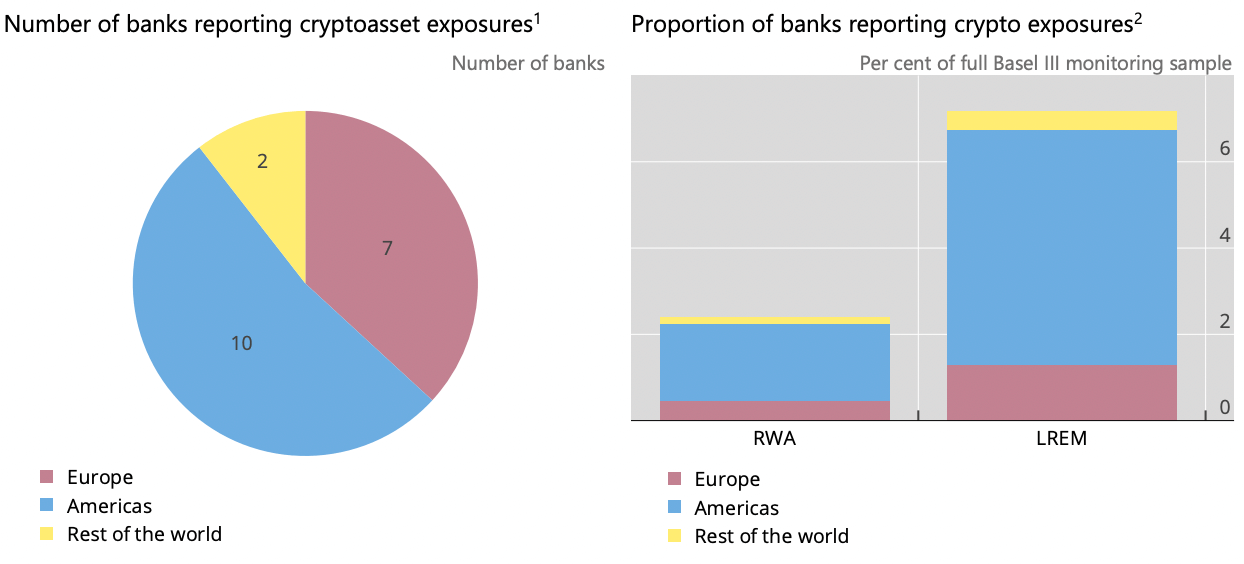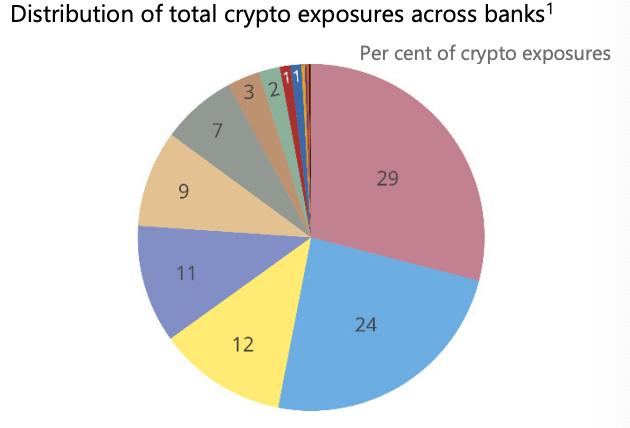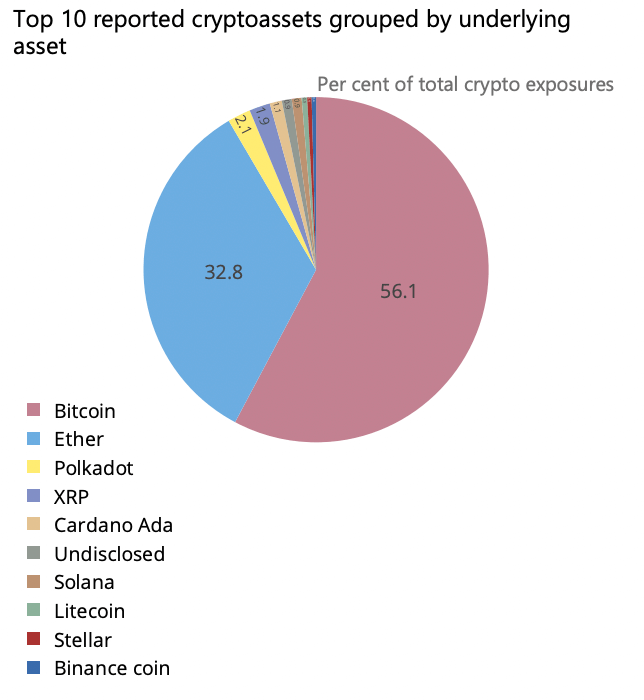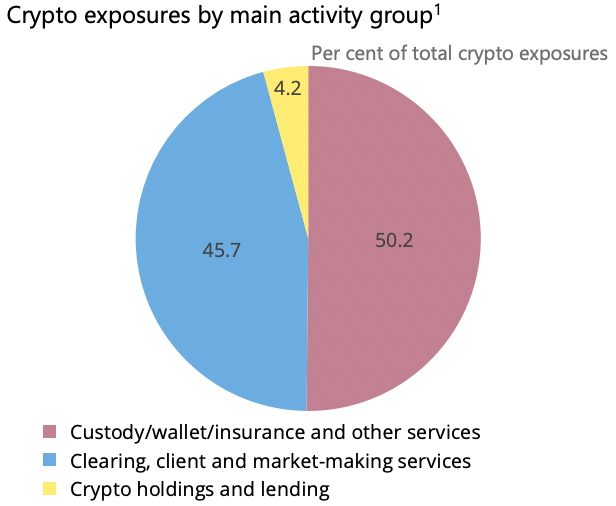- October 3, 2022
- Posted by: admin
- Category: BitCoin, Blockchain, Cryptocurrency, Investments
Global banking regulation standard Basel Committee’s latest report estimates the global bank exposure to crypto to be at 0.01%, as the 19 largest financial institutions hold €9.4 billion worth of crypto, which equates to 0.14% exposure.
The report took the crypto asset data from 16 Group 1 banks and three Group 2 banks. Ten of these banks were from the Americas, seven were from Europe, and the remaining two were from the rest of the world.

Considering these financial institutions’ size and expansion level, the report estimates that the global crypto exposure would turn out to be around 0.01% after the Group 3 banks are included.
With that being said, the report also acknowledges crypto’s exponential growth rate and reminds us that it is difficult to estimate the real exposure rate. It states:
“As the cryptoasset market is fast evolving, it is difficult to ascertain whether some banks have under- or over-reported their exposures to cryptoassets, and the extent to which they have consistently applied the same approach to classifying any exposures.”
Exposure distributions
Cryptoassets belonging to the ten Americas banks comprise around one-third of the total €9.4 billion. The distribution amongst these banks is not even either.

Two institutions make up more than half of total crypto exposure, while four make up around 40%. The remaining 10% is shared amongst 13 banks.
Token distribution
According to the data, Bitcoin (BTC) and Ethereum (ETH) are the most held assets. Amongst all 19 institutions, Bitcoin exposure is at 31%, while Ethereum’s is at 22%. Tokens that have Bitcoin or Ethereum as underlying assets follow as the third and fourth most held assets. Bitcoin-based tokens make up 25%, while Ethereum-based ones make up 10%.
When the amount of Bitcoin and Bitcoin-based tokens are calculated together, exposure to Bitcoin stood at 56.1%, while Ethereum’s was 32.8%.

The remaining 10% is shared amongst other coins. Ripple (XRP) follows as the third most exposed coin with 2%, while Cardano (ADA) and Solana (SOL) come as fourth and fifth with 1% each. Litecoin (LTC) and Stellar (XLM) rank sixth and seventh with 0.4% each.
Banks have also reported that they held USD Coin (USDC) in smaller amounts, which are not included in the above charts.
Activity Distribution
Regarding the crypto-related functions participating banks offer, holdings and lending, market-making, and custody/wallet/insurance services came as the top three functions.

Amongst the three, Custody/wallet/insurance and similar services turned out to be most dominant with 50.2%. This category includes all custody, wallet, and insurance services for cryptoassets and facilitating client activity such as self-directed or manager-directed trading.
Clearing, client, and market-making services came second in line with 45.7%. All trading activities on client accounts, clearing crypto derivatives and futures, ICOs, and issuing securities with underlying crypto assets fall under this category.
Finally, holding and investing in cryptoassets, lending to entities, and issuing cryptoassets backed by assets on the bank’s balance sheet are collected under the crypto holdings and lending category, which came out as the least preferred activity with 4.2%.
The post Global banks’ exposure to crypto is around 0.01% appeared first on CryptoSlate.
